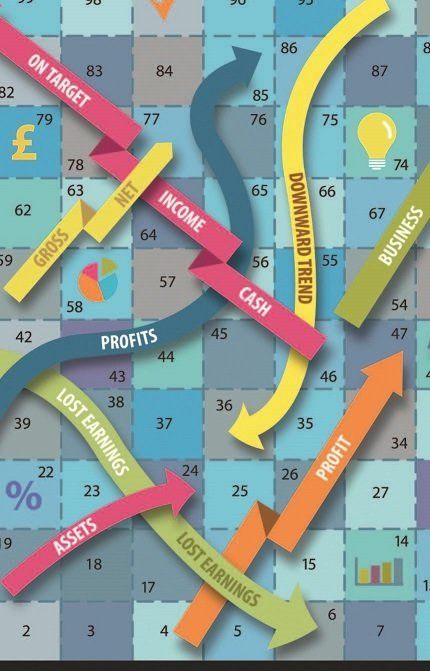Year End Tax Review 2021/22
Taxes and wages are rising
This autumn, the Chancellor announced that the rates of most classes of National Insurance Contributions (NIC) would temporarily increase by 1.25 percentage points for the year starting 6 April 2022, in order to raise funds for the NHS and social care.
These NIC rate increases will be replaced by the Health and Social Care Levy (HSCL) from 6 April 2023, which will also be set at 1.25% of income. The HSCL will apply to the earned income or trading profits of people who are working beyond state retirement age, unlike Class 1 employees’ NIC and Class 4 that is payable by the self-employed.
To ensure that taxpayers who take their income in the form of dividends also pay their fair share of tax, all the tax rates applicable to dividends will also rise by 1.25 percentage points from 6 April 2022. The combination of these two rate rises will have a significant effect on the tax and NIC payable by shareholders of family companies.
All employers need to budget for increases in the rates of National Living Wage and National Minimum Wage from 1 April 2022.
Also from 1 April 2022, all VAT-registered businesses will be required to submit their VAT returns using MTD-compatible software and to keep their VAT records in a digital format. HMRC is introducing a new system of penalties to encourage taxpayers to comply with MTD and to pay their VAT on time.
We recommend you undertake an annual review of your financial affairs, in order to check that you are not paying more tax than you need to and whether the structures you set up in the past are still appropriate. Between now and the end of the tax year (5 April 2022) is a good time to assess whether you have claimed all the relevant allowances and are as well defended against high tax charges as you can be.
Of course, the personal circumstances of each individual must be taken into account in deciding whether any particular plan is suitable or advantageous, but these suggestions may give you some ideas. We are happy to discuss them with you in more detail.
TAX ON PERSONAL INCOME
Give and save
Giving to charity under Gift Aid can result in a lower tax bill for the donor.
Making a Gift Aid donation will reduce your tax bill for the year in which the donation is made if your total income is above the 40% threshold (£50,270 for 2021/22). Taxpayers resident in Scotland can save tax with Gift Aid donations if their total income, including earnings, is above the 21% threshold (£25,296 for 2021/22). Alternatively, you can shift the tax benefit back one year by telling HMRC on your tax return. This can be useful if your marginal tax rate was higher last year than in the current tax year.
To carry back the Gift Aid donation, it must be made before you file your tax return for the earlier tax year. Say you make a Gift Aid donation of £2,000 on 21 December 2021. If you submit your 2020/21 tax return after that date (it’s due by 31 January 2022) you can include a claim in that return to carry back the £2,000 donation you made on 21 December 2021, which will reduce your 2020/21 tax liability.
Gift Aid can reduce your income used to calculate the clawback of Child Benefit (income over £50,000) and the reduction in personal allowance (income over £100,000). It can also increase your higher rate or additional rate threshold, which determine whether you receive a Personal Savings Allowance of £1,000, £500 or nil.
To make a valid Gift Aid donation, you must declare that you will pay sufficient tax to cover 25% of the value of your gift in the year the gift is made (or in the previous year if a carry back claim is being made). If you give £800 under Gift Aid, you must pay income tax and/or CGT of at least £200; this is the amount of tax that the charity reclaims from HMRC.
| Action Point! |
|---|
| Check the level of your charitable donations this year before you complete your next tax return. |
Tax breaks on savings
You can save for retirement in a number of ways. The traditional route is via a pension scheme, but you could also use an ISA.
Savers aged under 40 can open a Lifetime ISA (LISA) and contribute up to £4,000 per year, which attracts a 25% bonus from the Government. This bonus is withdrawn if the savings are accessed other than to be used as a deposit for the saver’s first home, on diagnosis of a terminal illness or from age 60 onwards.
The Lifetime ISA savings are counted as part of the annual ISA allowance of £20,000 per tax year. This allowance can’t be carried over to a future tax year, so you need to use it or lose it.
ISA savings are not taxed when they are withdrawn, but they don’t attract tax relief on the way into the account.
Pension scheme savings are taxed when they are withdrawn, with an exception for the first 25% cash lump sum taken. However, contributions into a registered pension fund will attract tax relief at your highest tax rate, subject to the cap imposed by your annual allowance.
This annual allowance is normally set at £40,000, which covers pension contributions made by you and by your employer on your behalf. Any annual allowance not used can be carried forward for up to three years.
If your income is over £200,000 and adding the pension contributions made by your employer takes that total to over £240,000, your annual allowance is reduced by £1 for every £2 over the latter threshold, down to a minimum of £4,000.
Your annual allowance is also reduced to exactly £4,000 if you have ever accessed your taxable pension savings built up in a money purchase (defined contribution) pension scheme. This is to prevent you from drawing funds from your pension scheme and then putting significant money into the same or another pension scheme, with additional tax relief.
Any unused amount of this £4,000 ‘money purchase annual allowance’ can’t be carried forward to future tax years.
| Action Point! |
|---|
| Are you making the most of the tax breaks available for savings and are you saving enough for eventual retirement? |
Scottish Taxes
If your main home is in Scotland, you pay Income Tax at up to six different rates (0%, 19%, 20%, 21%, 41%, and 46%) on any of your income that doesn’t come from dividends or savings. Your interest, dividends and gains are taxed at the rates and in the tax bands applicable in the rest of the UK.
The Scottish tax bands are not aligned with the National Insurance Contribution (NIC) thresholds, which leads to some very high marginal rates for Scottish residents, as shown in the table.
The NIC rates are different for self-employed individuals and don’t apply for those over state pension age. The high marginal rate between £100,001 and £125,140 arises because the Personal Allowance is withdrawn by £1 for every £2 of additional income in that band.
If you live in Scotland and plan to take taxable income from your pensions or pay yourself a bonus, be very careful not to push your income into a band where it is taxed at 53% or 63.5%.
| Employee in Scotland in 2021/22 | |||
|---|---|---|---|
| Income in band £ |
Scottish tax % |
NIC % |
Total rate on band % |
| 0 – 9,568 | 0 | 0 | 0 |
| 9,569 – 12,570 | 0 | 12 | 12 |
| 12,571 – 14,667 | 19 | 12 | 31 |
| 14,668 – 25,296 | 20 | 12 | 32 |
| 25,297 – 43,662 | 21 | 12 | 33 |
| 43,663 – 50,270 | 41 | 12 | 53 |
| 50,271 – 100,000 | 41 | 2 | 43 |
| 100,001 – 125,140 | 61.5 | 2 | 63.5 |
| 125,141 – 150,000 | 41 | 2 | 43 |
| Over 150,000 | 46 | 2 | 48 |
| Action Point! |
|---|
| If you live in Scotland, check what tax rate will apply on any extra income you plan to take. |
Working at home allowance
Where you are required to work at home, your employer can pay you a tax-free allowance of £6 per week (or £26 per month). This allowance is to cover the additional costs incurred by using your home as a workplace, such as heat, light, metered water, insurance and broadband fees.
If your employer doesn’t pay this allowance, but you are required to work at home for at least some of your working time, you can claim the same amounts as tax deductions from HMRC.
You don’t need to provide evidence of the additional home expenses incurred if you claim up to £6 per week. Where the additional costs exceed this value, you can claim for the actual expenses incurred, but you will be required to have proof in the form of receipts, bills or contracts.
A claim for home working expenses for 2021/22 can be submitted online, or as part of your self-assessment tax return, or using form P87. Claims for earlier years may be submitted on tax returns or form P87 and they must reach HMRC within four years of the end of the tax year to which they apply.
| Action Point! |
|---|
| Can you claim a tax deduction for working at home? |
Where there’s a Will...
When you die, your executors or relatives need to sort out your affairs. This stressful task can be made easier if you leave a clear and up-to-date Will that has been drafted with tax in mind.
They may also need to pay inheritance tax (IHT) if the net value of your assets, including your home and any insurance policies that pay out to your estate on death, exceeds the nil rate band (NRB) of £325,000. The IHT rate above this threshold is 40%, or 36% if at least 10% of your estate (net of NRB) has been left to charity.
The NRB is expanded by up to £175,000 if you leave the value of your home to one or more of your direct descendants. If that is your wish, your Will must be clear about who receives the value of your home.
There are other ways to reduce the IHT payable on death, such as:
- use your annual IHT allowance of £3,000 to make gifts from your capital or savings; if you didn’t use this allowance in 2020/21 you can give away up to £6,000 in 2021/22
- make other gifts to individuals as early as possible, as they will fall out of the IHT calculation if you survive seven years after the date of the gift (but be careful not to trigger CGT charges on the gifts)
- make regular gifts out of your surplus income rather than out of accumulated income or capital – those lifetime gifts may escape IHT
- ensure that proceeds from your life assurance policies flow directly to a beneficiary – if the money lands in your estate on your death, this could trigger an IHT charge
- inform your pension fund managers of whom you wish to receive any undrawn funds by way of a wishes letter – such funds can be free of IHT if you die aged under 75
| Action Point! |
|---|
| Make sure your loved ones have a copy of your Will and that it is up-to-date. |
Don’t miss tax deadlines
If you miss the deadline for filing your self-assessment tax return (31 January for online filing) you will be charged a £100 penalty.
If the return is filed more than three months late, an additional £10 per day is charged and, after six months, another penalty is incurred (the higher of £300 or 5% of the tax due). The flat-rate penalties will stand even if the tax return shows no tax.
Your company’s corporation tax return is due a year after the end of the accounting period. The penalty for being even one day late is £100 and another £100 is imposed after three months, then 10% of the tax due if the return is six months late. If you make a habit of submitting late company returns, the fixed penalties rise to £500 each time.
If you have a ‘reasonable excuse’, HMRC may agree to cancel the penalty. However, what you think is a reasonable excuse may well be found not to be so by HMRC or a tax tribunal.
Paying tax late will also attract interest and sometimes a penalty. VAT penalties are changing from April 2022 to allow some leeway if the debt is paid within 15 days, but debts arising before then can trigger a penalty of up to 15% of the delayed payment, for even being one day late.
Where you will have difficulty in paying tax debts falling due, you should ask HMRC to set up a payment plan to spread the debt over up to 12 months. Do this as soon as possible.
| Action Point! |
|---|
| If you can’t pay the tax due, contact HMRC for a payment plan. |
Will you get a full state pension?
In order to receive the full state pension on reaching State Pension Age on or after 6 April 2016, you need to have accrued 35 complete years of National Insurance Contributions (NIC). To receive any amount of the UK state retirement pension, you need at least ten complete NIC years.
You can check how much state pension you are due to receive through your personal tax account on gov.uk. We can help you with this.
It is possible to plug gaps in your NIC record by paying voluntary Class 3 NIC. This payment generally needs to be made within six years of the gap year, but there are various exceptions that extend the period. Self-employed traders who don’t have to pay Class 2 NIC because their profits are below £6,515 can choose to pay Class 2 voluntarily instead of Class 3; paying Class 2 will be cheaper.
You may also qualify for NI credits for some years if you were claiming state benefits, Child Benefit or were a foster carer. The NI credits were not always applied automatically, so it’s worth checking your own NIC record.
If you have already paid enough NIC to get the full state pension, you may consider taking further amounts from your company in other forms (such as dividends or pension contributions).
| Action Point! |
|---|
| Consider topping up your NIC record by claiming NIC credits or paying voluntary contributions. |
Review your mix of income
All interest you receive is taxable, unless it is from an ISA, but banks and building societies don’t deduct tax from interest paid to individuals. For most taxpayers the rate of tax payable on that interest is 0%, so no tax is in fact due.
This zero tax rate applies where your savings income falls within your Savings Rate Band (SRB), which is worth up to £5,000, or within your Personal Savings Allowance (PSA), which is worth £1,000 for basic rate taxpayers or £500 for higher rate taxpayers. Any savings income which falls outside the SRB or PSA is taxed at your marginal income tax rate (currently 20%, 40% or 45%).
The available SRB depends on how much taxable income you receive, other than interest and dividends. Examples include salary, pensions, trading profits or rent. If you can control the type of income you receive, you can reduce the total tax you pay for the year, just like Harry in the example below.
| Example | |||
| Harry has £150,000 of capital deposited in a bank at 0.6%, so he receives £900 of interest per year. After deducting his personal allowance (£12,570) from his salary of £18,000 he has £5,430 of taxable income, which is deemed to use up his SRB. He is a basic rate taxpayer, so has a PSA of £1,000. | |||
| 2021/2022 | Non-savings | Savings | Tax payable |
| Salary/Interest | £18,000 | £900 | |
| Personal Allowance | (12,570) | ||
| Taxed @ 20% | 5,430 | £1,086 | |
| PSA (max £1,000) | (900) | ||
| Taxed @ 20% | NIL | NIL | |
| Total tax payable | 1,086 | ||
| Suppose instead that Harry lends £150,000 to his company, which pays him interest at a commercial rate of 3.5% (i.e. £5,250) under a written agreement. The company uses the money for developing a business property. Harry also reduces his salary to £13,650, so that his total income is still £18,900. Reducing his salary frees up some starting rate band to set against his interest income – see below. | |||
| 2021/2022 | Non-savings | Savings | Tax payable |
| Salary | £13,650 | ||
| Interest | 5,250 | ||
| Personal Allowance | (12,570) | ||
| Taxable @ 20% | 1,080 | 216 | |
| 5,250 | |||
| SRB (5,000-1,080) | (3,920) | ||
| PSA | (1,000) | ||
| Taxable @ 20% | 330 | 66 | |
| 282 | |||
| Harry’s tax bill has been reduced from £1,086 to £282 on the same level of income. The company must deduct tax at 20% from the interest it pays him but this can be reclaimed by Harry. | |||
| Action Point! |
|---|
| Review your mix of income from your company to utilise your savings allowance for 2021/22. |
A family view
In the UK, everyone is taxed as an individual, but social security benefits, including tax credits and Universal Credit, are awarded on the basis of the family’s total income. Child Benefit is clawed back based on the income of the higher earner in a couple, irrespective of who receives it.
Families with an unequal distribution of income will often pay more tax than couples who earn just enough each to cover their personal allowance (PA) and the basic rate band. The thresholds for restricting Child Benefit (£50,000), PA (£100,000) and pension annual allowance (£240,000) all operate for the individual, so disadvantage families where the income is concentrated in one person’s hands.
Consider the Browns – they have two children and claim Child Benefit. In 2021/22 George Brown earns £90,000 and pays higher rate tax, but Sally Brown has no income. As George’s income is over £60,000, the family’s total Child Benefit is clawed back from him as a tax charge.
In contrast, John and Joy Green each earn £45,000, so they keep their Child Benefit and pay less Income Tax, as their highest marginal tax rate is 20%. Both Greens make use of their full PA and most of their basic rate band.
Roger and Rose White are in a worse tax position. Rose’s total income is £210,000 and her employer contributes £40,000 into her pension scheme every year. Roger and Rose have no effective PA, as Roger has no income to set his allowance against and Rose’s PA is entirely withdrawn, because her income exceeds £125,140.
Rose is treated as having income of £250,000 (£210,000 + 40,000) for pension relief purposes. Her pension annual allowance is therefore reduced to £35,000, so she suffers an annual allowance charge at 45% on £5,000 of the pension contribution made by her employer.
These examples show that families can save tax if they transfer some income from the higher earner to the lower earner, in order to take advantage of the PA or lower tax bands and to avoid the reduction of PA or the clawback of Child Benefit. This is not always easy to do, but the following methods are permissible:
- make an outright gift of investments which produce taxable income
- put savings and investments into joint names and share the income
- employ the spouse or partner in the other person’s business
- take the spouse or partner into partnership in that business
HMRC can challenge some of these methods if they think the transfer is not genuine – always take tax advice to be sure that your plan will work.
| Action Point! |
|---|
| Can you transfer an income source to reduce your family’s total tax bill? |
Crossing the threshold
When your total income reaches certain levels, it tips any extra income into a tax band where a higher rate of tax is charged. This can also mean you lose part or all of your personal savings allowance (PSA), personal allowance (PA) or pensions annual allowance.
Taxpayers who live in Scotland have slightly different tax thresholds than those that apply in the rest of the UK (see Scottish Taxes), but the principle is the same. You may be able to save tax by moving income from 2021/22 to 2022/23, or by making certain payments in 2021/22 rather than in 2022/23.
Say you are a 20% taxpayer in 2021/22 but expect that a lump sum termination payment due in March 2022 will tip you into the 40% band (over £50,270). If you ask your employer to delay paying the termination payment until after 5 April 2022, you’ll pay the tax on that income later. You will also retain all of your 2021/22 £1,000 PSA and may still stay out of the 40% band for 2022/23. The main thresholds for 2021/22 are:
- PA: £12,570 – basic rate tax (20%) starts
- Higher rate threshold: £50,270 – 20% rate increases to 40% and PSA reduces from £1,000 to £500
- Married couples: transfer of £1,260 of PA is possible where the higher earner has income up to £50,270
- Child Benefit clawback: income between £50,000 and £60,000
- Withdrawal of PA: income between £100,000 and £125,140
- Additional rate threshold: £150,000 – 40% rate increases to 45%, Savings Allowance removed
- Pension annual allowance reduced where income (including employer pension inputs) above £240,000
Income that can easily be moved from year to year includes:
- bonus from your own company
- dividends from your company
- encashments of life assurance bonds
- withdrawal of taxable income from pension schemes in ‘drawdown’.
Note, however, that moving earnings or dividends into 2022/23 will make them subject to the higher NIC and dividends rates that are being introduced.
| Action Point! |
|---|
| Consider moving income or deductions around 5 April 2022. |
CAPITAL TAXES
Accelerate tax relief!
The end of the accounting period for your business is a key point for tax planning.
You can save or delay tax by advancing the acquisition of assets to before the end of your accounting period. This permits you to claim the capital allowances associated with those assets earlier.
If you trade through a company, you can claim a super-deduction of 130% of the cost of new plant and machinery purchased before 1 April 2023. This super-deduction only applies to brand new equipment, including vans and trucks, but not cars.
Expenditure on new equipment fixed to buildings, e.g. lifts, air-conditioning and solar panels, can qualify for a special 50% deduction if purchased by April 2023.
Where the equipment is not brand new, or your business is a soletrader or partnership, the cost of new equipment is likely to fall within the Annual Investment Allowance (AIA). This gives a deduction of 100% of the cost as a capital allowance in the year of purchase. The maximum amount that can be claimed under the AIA per year is £1 million until 31 March 2023.
Complicated transitional rules can apply for these allowances where an accounting period straddles 31 March 2023.
The cost of constructing, renovating or converting a commercial building to be used by your business qualifies for a 3% pa Structures and Buildings Allowance (SBA). Costs connected with residential accommodation don’t qualify for the SBA, nor do the costs of acquiring land or obtaining planning permission.
We can advise you about the type of capital allowance or tax relief for which your proposed expenditure will qualify.
| Action Point! |
|---|
| Review the timing of asset acquisitions to maximise capital allowances. |
Let properties
Individual landlords of residential properties can no longer deduct interest or finance costs from their rental income for tax purposes. In place of the blocked interest the landlord receives a 20% tax credit to set against their income tax bill. This restriction of interest deductions doesn’t apply to corporate landlords, nor to individuals letting furnished holiday accommodation (if the qualifying conditions are met).
Where your property business is supported by borrowing, the restrictions on interest deductions could push your total income into higher tax bands, leading to the loss of personal allowance or potential clawback of your family’s Child Benefit.
If your residential property business is supported by large borrowings, you should consider how you could restructure that business to reduce your higher tax bills. Your choices may include
- selling one or more residential properties to reduce your borrowings
- selling some residential property and reinvesting in commercial buildings, where the interest restrictions don’t apply
- letting homes as Furnished Holiday Lettings
- transferring the properties into a company
The last option is not easy, as the lender will have to agree to transfer your property loans to the company. The transfer of properties is likely to incur land tax charges for the company and may well generate a taxable capital gain in your hands.
Individual landlords with turnover of no more than £150,000 should use the ‘cash basis’ to draw up their accounts. This has the effect of taxing income in the year it is received and relieving expenses in the year they are paid. It may benefit you if your tenants tend to pay late. You can opt out of the cash basis if you wish.
We can help you model the financial future for your residential property lettings.
| Action Point! |
|---|
| Review your borrowings to ensure a sustainable future for your let properties, particularly as interest rates are expected to rise soon. |
Tax-free rent
When you let rooms in your own home as residential accommodation, you can receive the rent tax-free if it falls within the limits for rent-a-room relief. This relief is currently capped at rents of £7,500 per year. Where more than one person receives the rent from the property, each person has a tax-free exemption for rent of £3,750.
The conditions include that you must occupy the property as your main home at some point in the tax year. This relief can’t cover income from a holiday home or buy-to-let property. Also, the accommodation must be used for residential purposes, not as an office or storeroom.
If you let out land or buildings which don’t qualify for rent-a-room relief, the income could be covered by the £1,000 property income allowance. You can’t use this allowance against rent paid by your own company, a company you work for, or one with which your spouse is associated.
If either type of rental income exceeds the relevant allowance, it must be declared on your tax return, along with any related expenses. If the allowance exceeds the actual expenses, you can deduct that allowance in place of those expenses.
| Action Point! |
|---|
| Can you claim rent-a-room relief or the property allowance? |
Risk with tax breaks as a reward
The Government encourages individuals to make high-risk investments in small trading companies or charities by providing income tax relief for investors in the following schemes (limits for 2021/22):
- Social Investment Tax Relief (SITR): 30% relief on up to £1 million
- Enterprise Investment Scheme (EIS): 30% relief on up to £2 million
- Seed Enterprise Investment Scheme (SEIS): 50% relief on up to £100,000
- Venture Capital Trust (VCT): 30% relief on up to £200,000
The amounts invested under EIS, SEIS or SITR can be treated as made in the previous tax year if the investment limit for the earlier year has not been reached.
When you dispose of shares acquired under these schemes, any capital gains you realise will be free of CGT if you’ve held the investment for at least three years (except VCTs, where there is no minimum period).
Tax due on capital gains made from selling other assets can be deferred by reinvesting under the EIS or SITR within three years of making the gain. However, the SITR scheme will only be open for investments until 5 April 2023.
Reinvesting the gain in SEIS shares will halve the tax on that gain if the investment limits and conditions are not breached.
If you acquire unquoted trading company shares on or after 17 March 2016 in a company for which you do not work and hold them for at least three years, any gains made on the disposal can qualify for Investors’ Relief, meaning the rate of CGT due is only 10% on gains up to £10m.
These tax reliefs won’t turn a bad investment into a good one, but they will make a good one better and will reduce the risk involved in investing. You should, however, always take advice from a qualified financial adviser on where to put your money.
If you are thinking of investing in one of these schemes, you may want to do so before 6 April 2022 to maximise the benefit.
| Action Point! |
|---|
| Are tax-favoured investments worth discussing with your advisers, despite the risk? |
Tight CGT reporting deadline for residences
Contrary to popular belief, the profit you make when you sell your home, or a former home, is not automatically exempt from CGT.
This tax exemption applies to gains that relate to periods in which you lived in the property as your main home. However, it can be extended to certain periods when you were not living in that property.
For example, the last nine months of ownership are exempt from tax, which is extended to 36 months where the owner or their spouse is disabled or has moved into residential care.
Where you sell or transfer any UK residential property, any capital gain producing a CGT liability needs to be reported, and the CGT paid to HMRC, within 60 days of completion of the disposal.
The gain must be reported through your online UK Property Account and on your self-assessment tax return for the year, if you are someone who has to file one (e.g. due to being self-employed or having rental income). We can help you with this reporting.
Talk to us if you are planning to sell a residential property, so we can collect all the information needed to calculate the gain within the 60-day reporting period. There are automatic penalties if the reporting deadline is missed.
| Action Point! |
|---|
| Make sure you have all the information to report the gain and pay any CGT on your property sale within 60 days. We can help you be prepared. |
Reducing CGT bills
Everyone has an annual exemption for capital gains tax (CGT) of £12,300 for 2021/22. This is wasted if you don’t make capital gains in the tax year. You can’t carry forward any unused exemption to a different tax year or transfer the exemption to another person.
If you are planning to dispose of assets that will create capital gains, you can save tax if the disposals are spread over several tax years. This is easy to do if your assets can be split into separate chunks, like shares. Each sale can then be calculated to produce a gain of less than £12,300.
If the asset must be sold in one go, you could reinvest part or all of the gain in Enterprise Investment Scheme (EIS) shares, but you must be prepared to take a risk. This will defer the gain until the EIS shares are sold. You can sell sufficient EIS shares in later years, so the that the gains chargeable are covered by your annual exemptions.
Gifts to your spouse or civil partner don’t create immediate taxable gains, as the recipient takes over the transferor’s CGT cost. You can use this transfer between spouses to share the ownership of a property, and hence the gain, and thus use two annual exemptions in one tax year on eventual disposal of the asset.
When you give a valuable asset to another relative, the disposal is treated like a sale at market value and the deemed gain is taxable. However, where certain assets (e.g. family trading company shares or agricultural property) are given to other family members, a capital gain may be avoided if an appropriate ‘gift relief’ claim is jointly made. This will lead to the recipient having a bigger capital gain on eventual disposal of the asset than would otherwise have been the case.
You should always take specific legal advice when giving away land or buildings, or a share in such property. Stamp Duty Land Tax (or similar taxes in Scotland or Wales) may be payable if the property is mortgaged.
| Action Point! |
|---|
| Are you taking full advantage of the CGT exemption? |
BUSINESS TAXES
Claim for your company’s losses
Companies can take advantage of an extended carry back period for trading losses arising in accounting periods that end between 1 April 2020 and 31 March 2022.
The trading losses from these periods can be carried back to set against total profits of accounting periods ending in the previous three years.
There are two £2 million caps (one for each financial year in which the loss is generated) for the losses carried back to the two earliest years of the three.
Claims for losses can be submitted as soon as the accounting period has ended, as long as the loss can be quantified appropriately and supported with draft accounts or management accounts.
Your company does not have to finalise its accounts for the year or submit its corporation tax return before making a claim.
HMRC will accept loss claims for up to £200,000 for this extended carry back period outside of the corporation tax return. Larger loss claims must be made on the corporation tax return.
Remember any covid business support grants the company has received form part of its trading income for the accounting period, so will reduce any trading loss.
| Action Point! |
|---|
| Can your company claim extra loss relief to generate repayments of tax? |
Benefits-in-kind
Many employees were required to work at home in 2021. Their employers may have helped facilitate this by providing equipment or paying to boost their home internet service. Generally, these costs are not taxable on the employee if there is no significant private use of the asset or service.
Other benefits, such as company cars, remain taxable even if the employee was furloughed. We can help you check which benefits are taxable and which are tax-free in 2021/22.
In some cases, an employee can avoid being taxed on a benefit if they ‘make good’ the value of the benefit by reimbursing their employer. There are strict time limits for doing this.
All reimbursements of taxable nonpayrolled benefits for 2021/22 must be made by 6 July 2022, which aligns with the date for submitting the forms P11D.
The dates for making good on payrolled benefits-in-kind provided in 2021/22 are:
- 1 June 2022 for the value of road fuel used
- 5 April 2022 for all other benefits
The deadlines for making good do not apply to interest payable on beneficial loans and overdrawn directors’ loan accounts. Where such loans exceed £10,000 at any point in the tax year there is a taxable benefit if insufficient interest is paid. This taxable benefit can be avoided if interest at least equal to the Official Rate is reimbursed, where the borrower is contractually obliged to pay it. The Official Rate for 2021/22 is 2%.
Despite this exclusion for beneficial loans, most people should try to pay any interest due on a loan by the 6 July following the tax year, to avoid any doubt as to whether a benefit arises at the time the P11D form is being prepared.
| Action Point! |
|---|
| Check which benefits are tax-free for 2021/22 and, to avoid P11D issues on other benefits, meet the deadline for making good the benefit. |
Prepare for higher dividend tax
To balance the increase in NIC payable on salaries and self-employed profits, the tax you pay on dividends will also increase by 1.25 percentage points from 6 April 2022.
The dividend allowance has been frozen at £2,000; you pay zero tax on dividends which fall within that allowance. Any additional dividends are charged to tax at a rate dependent on which tax band they fall into (see table).
If you have surplus cash held within your own company, you may wish to consider paying out a higher dividend to the shareholders before 6 April 2022, rather than later. Where different shareholders in your company hold slightly different classes of shares the dividends paid out can be tailored to the shareholder’s needs.
The company needs to have sufficient retained profits to extract as dividends and you should first check that the cash is not needed for other purposes, such as paying tax bills or investment in plant.
We can calculate how much you can extract from your company as dividends in 2021/22, to beat the dividend tax rise that applies from 6 April 2022. However, it’s also important that bringing forward dividends into 2021/22 won’t push the recipients into higher tax bands.
| Dividends falling within: | 2022/23 | 2021/22 |
| Basic rate band | 8.75% | 7.5% |
| Higher rate band | 33.75% | 32.5% |
| Additional rate band | 39.35% | 38.1% |
| Action Point! |
|---|
| Have you used all your basic rate band and dividend allowance for 2021/22? |
Selling your business
If you are wondering whether, or when, you should dispose of your business, a sensible first step is to form an outline plan.
The sale of a successful trading company will generate a capital gain. This would normally be taxed at 20% after deduction of your annual exemption (£12,300 for 2021/22).
Business Asset Disposal Relief can reduce your tax rate to 10% on gains of up to £1m. However, this is a lifetime limit, so if you have already taken advantage of this relief in the past (it was formerly called Entrepreneurs’ Relief) you may not be able to make a further claim on the disposal of your business.
If you want to be sure of benefiting from capital gains reliefs, take advice and plan early.
| Action Point! |
|---|
| Be prepared for selling your business by planning early! |
Elect in good time
Events don’t always turn out as expected. For example, you may need to wait for a later profit or loss to arise before you can judge whether it’s right to elect to use losses in an earlier year. This is why the law allows you extra time, after you have submitted your tax return, to submit a tax election or claim. The elections you may need to make by 31 January 2022 for the 2019/20 tax year include:
- to set trading losses against your other income (see below regarding pandemic losses)
- to average the profits made from farming, or as an author or artist
- to treat a property as continuing to qualify as Furnished Holiday Letting if it qualified as such in 2018/19, but otherwise would not in 2019/20
You need to wait for a certificate to arrive before making a claim for your investment under the venture capital schemes – EIS, SEIS or SITR – so the claims period for those schemes is five years after the tax return submission date.
Corporate tax claims generally need to be made within two years of the end of the accounting period in which the transaction occurred.
We can help you check what claims or elections you need to make.
| Action Point! |
|---|
| Have you made all the necessary tax claims? |
Excited about electrics
The taxable benefit for having the private use of an electric company car is currently just 1% of list price. From 6 April 2022 the taxable benefit will rise to 2% of list price; it will then be fixed at that level until April 2025. However, even at 2% of list price, this is a bargain, as the company will cover the capital cost of the car, the insurance and any repairs or servicing.
If you want a hybrid car, those models that can drive at least 130 miles on electric power only also have a taxable benefit of just 2% of list price. Driving an electric van is even more beneficial, as there is zero taxable benefit for the driver!
Where a business buys a new electric car or van, it can claim 100% of the cost as a capital allowance in the year of purchase. For an electric car to qualify for this 100% First Year Allowance it must be acquired brand new (not second-hand) before 1 April 2025.
Companies that acquire brand new vans can claim a super-deduction of 130% of the price, if the van is acquired before 1 April 2023.
Where the business installs electric vehicle charging points before 31 March 2023, it can claim 100% of the cost in the year of purchase. There are also Government grants available for individuals who install electric vehicle charging points at their home.
Where employees are permitted to freely charge up electric vehicles at work, there is no taxable benefit for the use of that electricity. Drivers of electric company cars who pay for their own charging can claim a tax-free allowance from their employer of 4p per business mile driven.
Drivers who use their own electric cars for business journeys can claim the normal mileage rates of 45p per mile for the first 10,000 miles and 25p for any additional business miles driven in the tax year.
| Action Point! |
|---|
| Consider the tax incentives for electric or hybrid company cars. |
R&D tax breaks
Companies that invent new production methods or products can claim enhanced tax relief for the Research and Development (R&D) costs. Small and medium-sized companies can claim 230% of qualifying R&D costs and a 14.5% payable tax credit if this extra deduction results in a loss!
This is a very attractive relief and it’s easy to claim. You can ask HMRC for an advance assurance that your company, and its R&D projects, will meet the requirements. We can help you do this.
The main benefit of advance assurance is that HMRC won’t raise further questions about your initial R&D claim or for R&D claims submitted in respect of the next two accounting periods.
You need to apply for the R&D tax relief within two years from the end of the accounting period in which the R&D costs were incurred. So, if your company has been innovative in the recent past, don’t delay your application for R&D tax relief!
| Action Point! |
|---|
| Check the R&D expenses for which your company can claim an enhanced deduction. |
Squeeze value out of your losses
If your unincorporated business made a loss in 2020/21 or in 2021/22, you will want to utilise those losses and receive a tax refund as soon as possible. Fortunately, the rules have been changed to allow you to do this.
A trading loss from 2020/21 or 2021/22 can be carried back to set against the profits of the same trade for up to three years. Losses from letting property don’t qualify for carry back, as they count as investment losses rather than trading.
When calculating the trading loss for these periods you must include as business income any covid-related grants received, such as SEISS, CJRS, or business support grants. SEISS grants are treated as income of the tax year in which they are received, irrespective of the accounting period of the business.
Income tax trading losses arising in 2020/21 will be set off in the following order:
- Total income of 2020/21 and/or 2019/20
- Trading profits of 2018/19
- Trading profits of 2017/18
For steps 2 and 3 the maximum amount of loss that can be set off against profits in those two years together is £2 million. There is no cap on the amount of loss that can be set off in step 1.
For a 2021/22 loss, the same principles apply but the years of set-off are all one year later.
Any losses not used by this extended carry-back are carried forward to set against profits of the same trade in future years.
We can help you make a stand-alone claim to carry back losses as soon as the accounting period has finished, as you do not have to wait until your 2020/21 tax return is ready to file. However, your 2020/21 tax return is due soon and it must be submitted by 31 January 2022 at the latest.
| Action Point! |
|---|
| Make a claim to carry back your trading losses and receive a refund of tax paid in earlier years. |
Making Tax Digital (MTD)
For VAT periods beginning on or after 1 April 2022, it will be compulsory to keep your VAT records in a digital format and to file all your VAT returns using MTD-compatible software. We can help you with this if you are not already MTD compliant, but we need to work together to ensure your accounting system is ready.
Rest assured that you don’t need a completely new accounting system to comply with MTD, but this is a good opportunity to review whether your current processes really meet your business needs. Spreadsheets are counted as digital records, but if that is your only means to record transactions you will need some bridging software to submit the VAT returns to HMRC.
Retail businesses don’t have to record every single sale digitally. They can instead record just the total of the daily takings. However, for all purchases you need a digital record of the date (tax point), net value, and the VAT paid on the item.
Only a very few taxpayers will qualify for an exemption from the MTD regime, on the basis of being ‘digitally excluded’. The extra cost of converting to digital won’t be regarded as a reasonable excuse for non-compliance.
If your turnover is way below the VAT deregistration threshold of £83,000, you may want to consider cancelling your VAT registration. However, after that you won’t benefit from claiming back VAT on expenses. Also, MTD for Income Tax will start from 6 April 2024 for all sole traders with turnover that exceeds £10,000 per year.
| Action Point! |
|---|
| Is your VAT accounting system ready for MTD? |
This newsletter is written for the benefit of our clients. Further Advice should be obtained before any action is taken.











